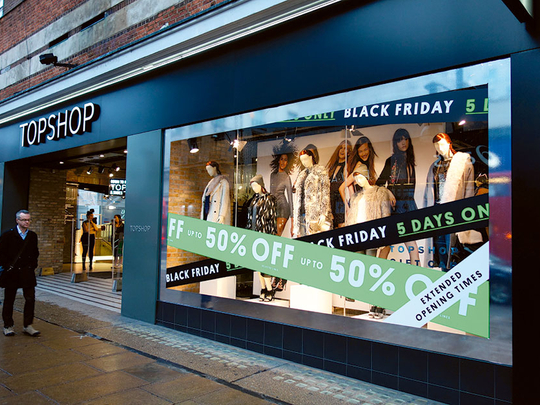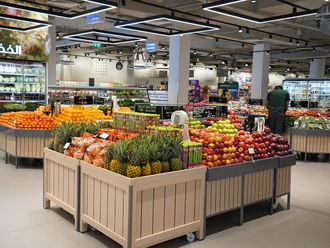
The online edition of the Cambridge Dictionary defines retail therapy as “the act of buying special things for yourself in order to feel better when you are unhappy”.
Interestingly, this term has been classified as “humorous”, and the example offered is, “I needed a lot of retail therapy to help me get over my ex-boyfriend.”
US-based Cleveland Clinic, a leading academic medical centre, concurs. A November 2015 article on its website says, “When we say we’re going to the mall for a little retail therapy, most of us are being humorous. Research suggests there actually is a bit of therapeutic value in window shopping or visiting your favourite boutique for a few hours – your mood and spirits get a boost”.
Mood to shop
The article points out that taking shopping decisions can “restore a sense of personal control over one’s environment” — you get complete freedom to choose whatever you want to buy. Besides, buying objects of desire is perceived as an achievement.
Cleveland Clinic refers to a 2014 study by researchers at the University of Michigan, which claims “Sadness is strongly associated with a sense that situational forces control the outcomes in one’s life.” In such cases, shopping was “up to 40 times more effective” at making you feel that you were the master of your own life. Further, people who shopped were “three times less sad compared to those who only browsed”.
Visiting a mall is also a great distraction — the lights, smells, dazzling displays and food courts effectively drown out your inner negative thoughts. Instead, the anticipation and the prospects of becoming the proud owner of shiny new products puts an extra bounce in your step. Shopping, in fact, can be smartly deployed to reward yourself “for a new, positive behaviour like working out or eating healthy”.
Dr Kit Yarrow, a consumer research psychologist and author of Decoding the New Consumer Mind, dubs retail therapy as a “mini mental vacation”. In a 2013 article for the magazine Psychology Today, she also points to the “social connection” when you go shopping with friends, or interact with sales staff at the store. “If there’s one antidote to emotional distress, it’s human connection — whether it occurs over dinner, at home, or at the mall,” she adds, while observing there is some truth to the quip that when the going gets tough, the tough go shopping.
Dr Yarrow believes the most shopping-intensive times in our lives also happen to be periods of major transition — for example, marriage or expecting a baby. “The purchases themselves are only part of the allure. Shopping — and visualising — is preparation and it makes people feel less anxious about big transitions, which explains why sometimes the amount of shopping outweighs the actual needs,” she adds.
In a 2011 study, Retail therapy: A strategic effort to improve mood, researchers Dr Selin Atalay and Margaret Melroy studied the connection between negative moods and excess purchases — when consumers are feeling down, do they actually do “mindless shopping” that they invariably regret later? It seems negative feelings do lead to “greater purchase and consumption”, but feelings of guilt aren’t usually associated with unplanned purchases made to “repair a bad mood”.
The dark side
But exactly at what stage does retail therapy morph from a fun, therapeutic activity to full-blown addiction? Called oniomania, or compulsive shopping syndrome, it is similar to addictions such as alcoholism, gambling or drug abuse — with emotional, social and financial consequences. The Cleveland Clinic points to research done by Indiana University, which found a direct correlation between shopping urges and the search for a “rush or a high” by drug addicts. “Compulsive shoppers have a preoccupation with buying and shopping, marked by frequent buying episodes or overpowering urges to purchase items,” adds the Cleveland report. “[This] is linked to feelings of worthlessness and a lack of power.” It estimates about 7 per cent, or 20 million Americans suffer from it.
Elsewhere, the Live Science journal quotes other studies that bump up the number of oniomaniacs to 12 per cent of the US population. However, given the nebulous nature of the addiction, and the fact that a patient may not even realise they are addicted to shopping, it’s been a challenge for researchers to map its spread around the world. But we can safely assume a significant presence of oniomaniacs in a city like Dubai, often described as a haven for shopping.
Signs and cures
According to Cleveland Clinic, you’re most probably a shopaholic if you feel “shopping is the only way you can make yourself feel better”. Another big red flag is when you are consistently unable to pay off your credit-card dues. As always, moderation is the key — it can be realised through self-awareness and introspection. Group therapy or support groups can also come handy. As Australian publication The Age points out, perhaps the best place for an oniomaniac to go is one “where people are interested not in what you own, but in who you are”.
Case study
Dubai based media relations professional, Sharon Alvares, observes the outcome of retail therapy for her is “pure, unadulterated joy”, a feeling that sometime lasts until her “next brush with indulgence”.
She “absolutely loves” shopping for shoes, and “instantly gravitate” towards sales on shoes from her favourite brands. “I always go with the intention of buying no more than a couple of pairs but inevitably land up with 5 or 6 pairs,” she says.
Besides clothes, Alvares also shop for books, games and toys for her daughter.
“Retail therapy definitely works as a mood enhancer, gets you a bigger wardrobe and you could come across things you never thought of prior to going shopping,” she adds.
On the negative side, she notes excess purchases that just land up in the wardrobe, hogging space and never seeing the light of the day. To avoid retail therapy becoming an addiction, Alvares recommends setting a deadline when you go shopping.
“I give myself a timeframe and rarely go beyond that. This not only helps me with time management, but also ensures I do not over-indulge,” she says.













